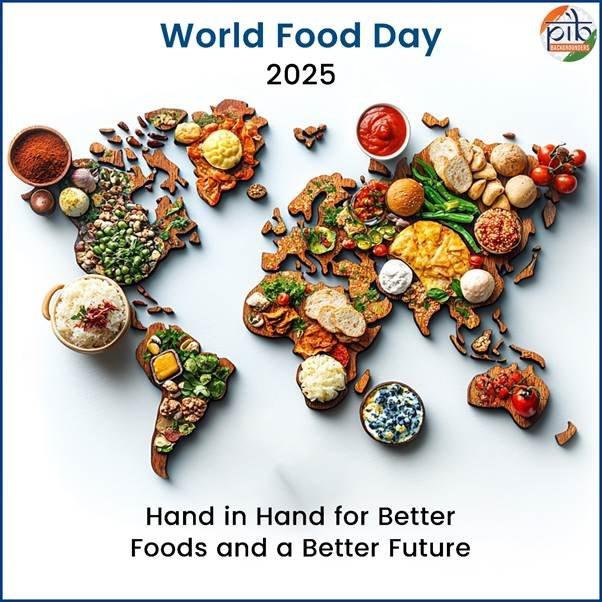New Delhi, Oct 16 – In a statement on World Food Day, India’s government highlighted how its food‑security plan works for 81 crore people. The day, celebrated every year on October 16, urges the world to make safe, nutritious and sustainable food available to all. This year’s theme, “Hand in Hand for Better Foods and a Better Future,” reminds us that food must reach every household, not just land the right amount on the farm.
India defines food security as giving every person—at all times—access to enough safe, nutritious food that fits their preferences and supports an active life. Barring hunger, that means balancing higher agricultural output with fair distribution.
Under its dual strategy, the government pushes farmers to grow more wheat, pulses, milk, honey and other staples while ensuring those foods reach the needy through schemes like the National Food Security Act (2013). The Act, together with flagship programmes such as the Pradhan Mantri Garib Kalyan Anna Yojana (PMGKAY), the Decentralised Procurement Scheme (DCP) and the Open Market Sale Scheme – Domestic (OMSS‑D), supplies affordable grains to almost every Indian family. These programmes also keep prices stable and protect the poorest from famine and malnutrition.
Production side strengths come from the National Food Security Mission (NFSM) launched in 2007‑08, which became the National Food Security & Nutrition Mission (NFSNM) in 2014‑15. NFSNM focuses on boosting crop yields and nutrition. Over the past decade, India has added about 90 million tonnes to its food‑grain output and 64 million tonnes to fruit and vegetable production.
India now leads the world in milk and millets production and ranks second in fish, fruit and vegetable output. Honey and egg stocks have doubled since 2014. Meanwhile, agri‑exports have nearly doubled over the last 11 years—underscoring the country’s growing role on the global food stage.
Other major welfare programmes—such as the Direct Beneficiary Transfer (DBT), Integrated Child Development Services, PM POSHAN, One Nation One Ration Card (ONORC) and the Public Distribution System—cement India’s pledge to end hunger and malnutrition.
In short, the government’s coordinated push to grow food and share it equitably is the backbone of India’s food security. The country’s month‑long celebration on World Food Day reaffirms that every citizen will have the nutrition and safety needed to thrive.
Source: ianslive
Stay informed on all the latest news, real-time breaking news updates, and follow all the important headlines in world News on Latest NewsX. Follow us on social media Facebook, Twitter(X), Gettr and subscribe our Youtube Channel.



